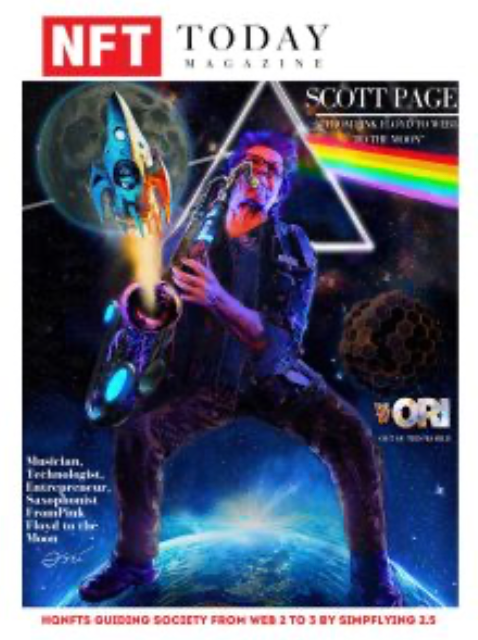How Social Media Echo Chambers Are Shaping Our Reality: A Conversation with Karabo Sitto-Kaunda
Staff Writer • 2024-09-10
The term echo chamber has taken on new significance. Social media, designed to connect people globally, has created isolated pockets of shared belief systems. These bubbles of like-minded individuals, while fostering communities, are also giving rise to social polarization and reinforcing entrenched worldviews. On a recent episode of the Stonks Go Moon podcast, I had the privilege of speaking with Karabo Sitto-Kaunda, an Associate Professor at the University of Pretoria, about the creation of these echo chambers and the consequences they pose for both online and offline interactions. Kaunda, whose academic career stems from corporate PR into academia, is deeply engaged in understanding how digital spaces are transforming human behavior. The Origins of Social Media Echo Chambers According to Sitto-Kaunda, echo chambers are not a new phenomenon but have been amplified by the rise of social media. "When social media first emerged, its primary function was to connect individuals to those they knew and loved. But as platforms like Facebook and Twitter grew, they evolved into more than just communication tools—they became curated experiences," she explains. In the early days, users willingly shared personal details, unaware of the commercialization looming on the horizon. “Your first sandwich, your email address, even your home address was available online,” she recalls. This open sharing was a far cry from today’s carefully curated online identities. However, when social media became monetized, algorithms began to play a more active role in deciding what users would see. The result? A self-perpetuating cycle of content that feeds into existing beliefs and biases, reinforcing them through constant exposure. “You end up with a feed that reflects your own views and nothing else,” Kaunda notes. How Echo Chambers Foster Extremes One of the key points discussed during our conversation was how these curated bubbles lead to absolution attitudes, particularly in the polarized spaces of platforms like X (formerly Twitter). Sitto-Kaunda highlighted that, while platforms were designed to engage users, they’ve also nurtured environments where moderation and nuance rarely exist. “You’re either on the far left, as you might see on LinkedIn, or on the far right, as is often the case on Elon Musk’s Twitter. There’s no real middle ground,” she argues. This extreme polarization stems from social media’s design, where algorithms push content that gets the most engagement—often content that’s emotionally charged or sensational. The constant reinforcement of one’s own beliefs fosters an environment where opposing views are not only rejected but vilified. “When someone bursts your bubble, it feels toxic because you’ve become used to a particular narrative,” Kaunda observes. “What follows is a degenerative experience, where opposing ideas are immediately seen as a threat.” The Impact on Youth and Communication Perhaps one of the most troubling aspects of echo chambers is their impact on younger generations. Today’s youth, digital natives who spend hours daily on platforms like TikTok, are increasingly disconnected from the real world. Sitto-Kaunda shares the concern that this generation is losing essential communication skills, empathy, and the ability to debate opposing viewpoints. “Living online means we’ve lost the art of human interaction,” she explains. The ease with which individuals can block, mute, or unfollow someone who disagrees with them has only deepened the problem. As she points out, young people are being conditioned to avoid discomfort, choosing convenience over meaningful human interaction. The Role of Artificial Intelligence and the Blurring of Reality In the latter part of our discussion, we touched on another crucial point—the intersection of artificial intelligence (AI) and social media. Kaunda describes how generative AI tools like MidJourney and ChatGPT are further complicating young people’s ability to discern reality from fiction. “For us growing up, a photo was proof of something that happened. But with AI, even that is questionable,” she remarks. AI-generated images and deepfakes are eroding trust in what is real, making it harder to engage in meaningful conversations when we can’t even agree on basic truths. Kaunda’s analysis extends beyond a simple critique of technology. She emphasizes that while AI and social media are powerful tools, they are only as good as how we choose to use them. "The problem isn’t the technology itself, but how it’s being used to manipulate reality,” she argues. The need for critical thinking, skepticism, and the ability to challenge one’s beliefs has never been more important. Conclusion: Building Authentic Connections in a Digital World In closing, our conversation left me with one key takeaway: social media, for all its potential to connect us, has created new barriers to genuine interaction. Echo chambers have confined us to digital spaces where our beliefs are seldom challenged, and AI threatens to blur the lines between what’s real and what’s imagined. Sitto-Kaunda advocates for a balance between digital and real-world connections. “We need to teach younger generations the importance of stepping away from the screen, engaging in real-life conversations, and questioning the narratives they are fed online,” she concludes. As we continue to navigate this digital age, it is vital to remember that while social media has transformed how we interact, real change—and real understanding—comes from engaging with diverse perspectives, both online and offline.
See More Posts
A look at how NFTS, Web 3, Gaming, Cryptocurrencies and Blockchain are reshaping businesses across the globe.
@NFT Today Magazine


